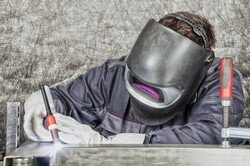Lightweight alloys and welding methods
A lightweight aircraft is more fuel efficient, so aircraft designers are constantly searching for new methods to reduce weight. Engineers have recently turned to new alloys and welding techniques. The EU-funded AFSIAL (Advanced fuselage and wing structure based on innovative Al-Li alloys) project developed suitable alloys and methods. A Clean Sky project, AFSIAL combined the most suitable materials with optimal welding processes, in order to reduce weight without affecting strength. The new alloys combine aluminium, copper and lithium. New assembling techniques included laser welding, plus the team investigated hybrid-laser welding and double-sided welding. The group combined all new materials and procedures with advanced design modelling, to produce and test optimised metal aircraft panels. Researchers first set out to separately identify and select new aluminium/lithium alloys most suitable for aircraft fuselages and wings. Alloys with low lithium content had the most suitable combination of properties. Specifically, investigators chose the 2198 T8 alloy for the fuselage and the 7150 T6 alloy for wings. The team also recommended the most appropriate welding and tempering processes for each alloy. Next, the group compared various candidate laser welding processes suitable for each of the target applications. They assessed each welding technique’s respective qualities, speed, penetration, heat input and overall energy consumption. Researchers designed and manufactured a set of stiffened aircraft panels, including two fuselage and two wing curved sections. The team addressed the problem of automatically detecting panel or global buckling. The project’s major achievement was definition and validation of an automated optimisation procedure, leading to optimised panel thicknesses and other improvements. As a result, the new panels saved weight generally between 16 and 30 %, and sometimes up to 50 %. Although AFSIAL was unable to complete experimental verification of the welding process, the work represents a significant advancement in the aircraft design process, leading to future weight and fuel savings.







